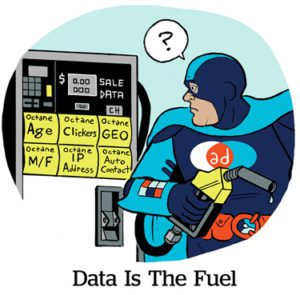Ecommerce isn’t just a new category for online advertising. It’s changing how online advertising works.
The first generation of online ad metrics was all about measuring the impact of the ad itself: click-through rate, app installs, video views and the like tied to a standard CPM.
Those metrics were an attempt to prove that online ads aren’t just little billboards sprinkled across the internet that we all disregard.
But as ecommerce adoption has grown, measurement has shifted away from proxies and become connected to business results, including sales and other metrics to quantify profitable growth.
The Amazon revolution
And there’s no more logical place to start when talking about ecommerce advertising transformation than with Amazon.
Retail media ad spend surpassed $50 billion in 2023, and Amazon claimed roughly $47 billion of that.
Amazon’s baseline ad metric is called ACOS (advertising as a cost of sales). Represented as a formula, it’s: ACOS = Ad Spend / Paid Media Revenue X 100.
ACOS doesn’t measure organic sales. But if a business spends $10,000 on Amazon ads and Amazon attributes $40,000 in sales to those ads, then that campaign had an ACOS of 25%.
Amazon advertisers must determine what ACOS rate allows their business to operate profitably. If the cost of advertising is too high, for instance, the cost of a sale could easily negate the worth of the sale itself. This is especially true during highly promotional periods, like holiday shopping or on Amazon Prime Day.
But Amazon also uses some traditional ad metrics, including return on ad spend (ROAS), which is the flip side of the ACOS coin.
The formula to determine return on ad spend is: ROAS = Paid Media Revenue / Ad Spend X 100.
An ACOS of 25%, therefore, would be a ROAS of 400% (or in more common parlance, a $4 ROAS).
ACOS is significant because it demonstrates the rise of ecommerce-based metrics and the difference in approach between Amazon and other major ad platforms. Whereas ROAS or ROI measure the performance of the ads themselves, ACOS calculates the cost-efficiency of a given sale and how much of the profit margin from that sale was spent on ads.
Brick-and-mortar metrics
But it’s also critical to measure organic sales.
In 2022, Amazon introduced a beta program, which launched commercially last year, to create a total ROAS metric (TROAS). The “total” element means that it incorporates organic sales lift, not just sales attributable to ads.
On the one hand, this is sort of unfair. Amazon and other retailers benefit from TROAS because they get some credit for organic sales on their platforms.
But on the other hand, marketplaces like Amazon are pay to play. You can have organic success on Amazon – but you have to pay for the privilege of being there. This is not unlike in brick-and-mortar stores where brands pay for shelf space.
TROAS is a way for a retailer or online marketplace to claim its platform is performing well when there is any uplift in sales. They can also ostensibly connect that lift to paid media even when the sales aren’t necessarily attributable to ads.
TROAS will no doubt become especially popular with brick-and-mortar retailers that have online ad platforms because it aligns with shopper marketing.
For example, if Doritos pays to install a special snack setup near the checkout aisle in Kroger stores, each individual purchase registers as organic despite being driven by the shopper marketing budget. TROAS is a way to attribute those sales to advertising.
Search and social
It makes sense that Amazon is pushing new ecommerce metrics. But these metrics are also coming for the search and social platforms, even though they aren’t shopping hubs – yet.
Google and Meta have to get a bit more creative, however, because they don’t own retail and payment data. Instead, they use modeled data and measure more concrete direct response-type goals, such as adding a new profile to a brand’s CRM, which they would call new customer acquisition.
In 2022, Google began testing options for advertisers to increase bids for new customers specifically or to bid exclusively on new customers, as in those that aren’t a match to company’s first-party data set. The new customer metrics are currently available in beta and only to retailers or merchants via Search or Performance Max campaigns.
The ability to use modeled data to measure customer lifetime value (LTV) came out of beta as a new metric in Google Analytics last year.
Meta, meanwhile, is also prodding more customers toward LTV modeling as a way to gauge the expected value of an individual over time. That’s not surprising considering that as a result of signal loss Meta is no longer able to directly attribute ad impressions on Facebook to purchases on other sites or apps.
Google and Meta both have their own historical data on their users (which is to say, pretty much everyone) and a keen sense of which individuals will be more desirable for a business in the long run. Even if they can’t self-attribute sales, like Amazon can, they’re able to attribute based on a modeled version of that customer over time.
So, what’s the takeaway?
The web is no longer about clicks, visits and other measures of ad traffic. Now, it’s about foot-traffic in physical stores and the data that shows up in a brand’s CRM, not in its ad server.


















